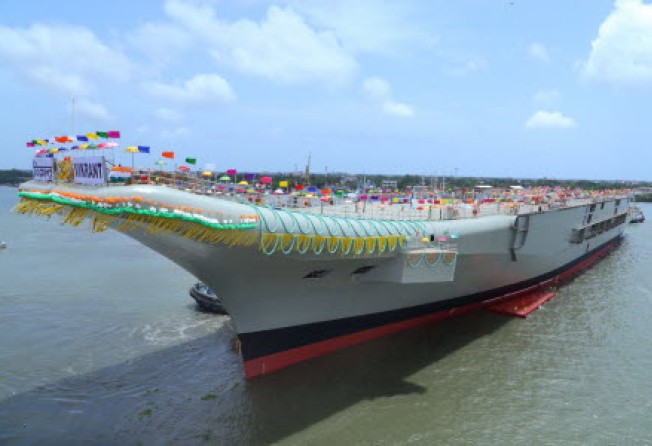Asia's blue-water navies have become a rising concern

Ships with flight decks for fighter jets and helicopters are all the rage in Asia. India launched its first home-grown aircraft carrier this week; China is reputedly building two to join the Soviet-era one commissioned last year; and Japan unveiled its biggest naval vessel since the second world war on August 7. In an era of unmanned drones, precision missiles and nuclear submarines, such expensive and imposing vessels would seem an anomaly. But in a region where anxieties and concern about neighbours are rife, they are as much about projection of growing wealth and stature as deterrence and stability.
Powerful imagery and symbolism are attached to carriers. Their sheer bulk, and the technology and skill needed to launch aircraft from their decks means that only a select few countries are capable of building and operating them. With the launch of the 37,500-tonne INS Vikrant, India on Monday joined China, the US, Britain, France and Russia in the elite club. Getting so large a vessel onto the water is only the first step, though. At least another five years are now needed for outfitting and further construction before it can enter service.
Japan also aims to boost naval power with its Izumo-class destroyers, from which 14 helicopters can be launched for missions ranging from humanitarian work to border surveillance and anti-submarine warfare. Although a destroyer by name, it is a carrier in terms of size and function. To critics, Beijing and Seoul among them, that constitutes military expansion and a further pushing by Japanese Prime Minister Shinzo Abe's government of a nationalist agenda that includes revising the country's pacifist constitution. For the sake of regional stability and development, Tokyo has to strive harder to reassure and abide by its decades-old policy of self-defence.
China and India are building blue-water navies. In the face of China's rise, Japan, Vietnam, the Philippines and other Asian nations are boosting their maritime prowess. Carriers, while costly, are an effective way of protecting seaborne trade, mineral shipments and overseas interests. In keeping with international expectations that China should play a bigger role on the world stage, its ships, and their planes and helicopters can help provide peace, stability and humanitarian support.
But the new carriers also signal an acceleration of a regional arms race. This is inevitable and troubling for some nations. As vessels are built and put into service, governments have to clearly communicate their purpose.